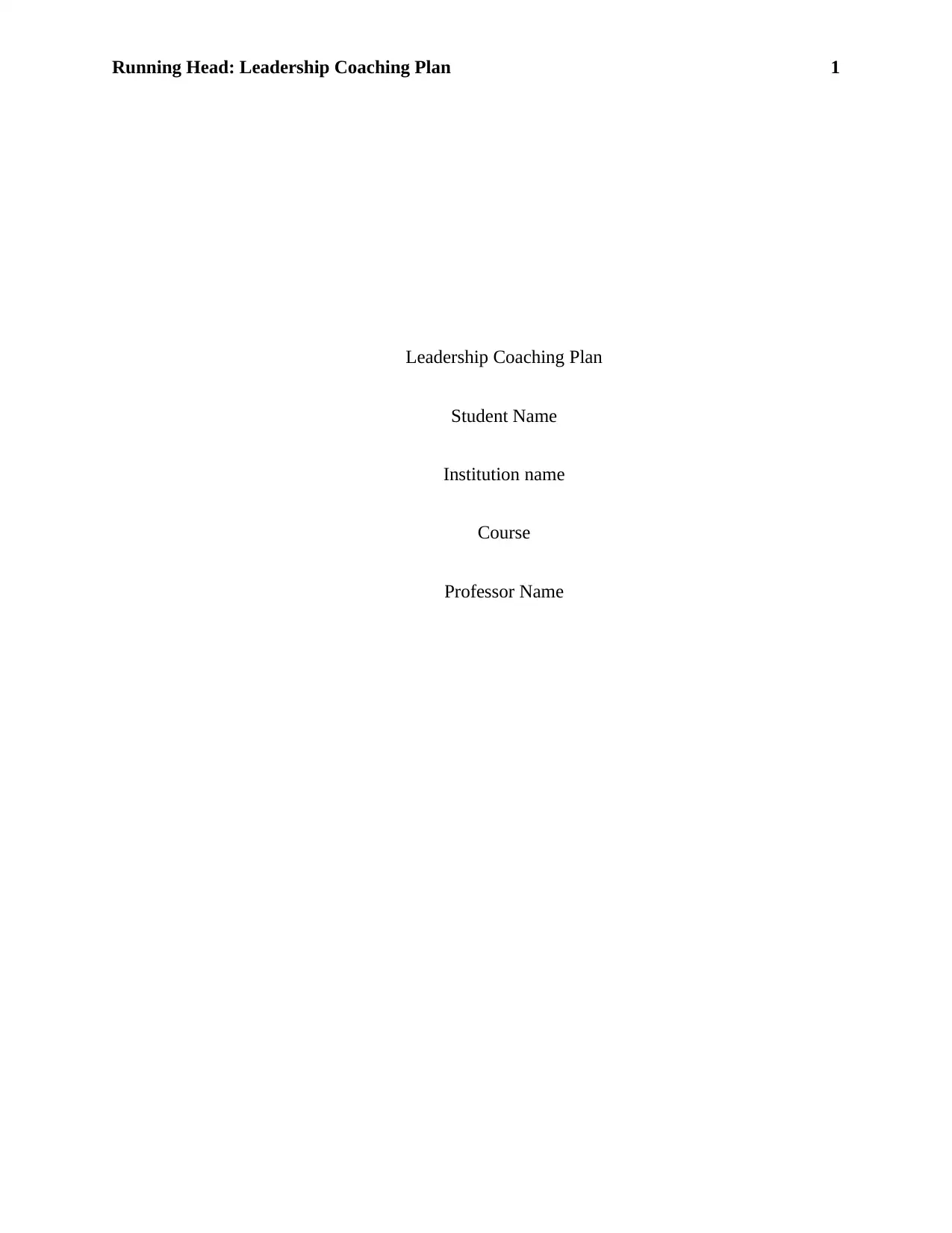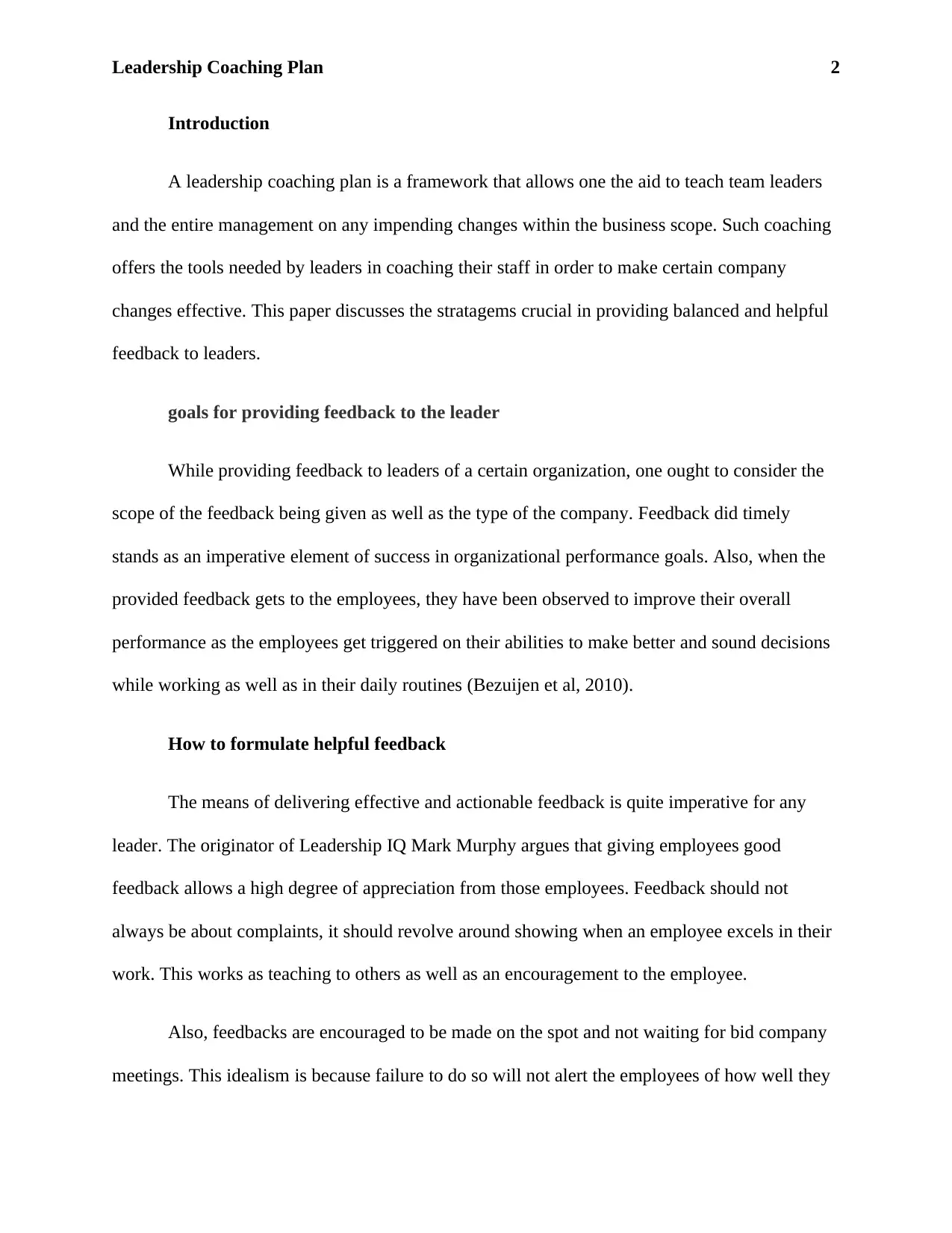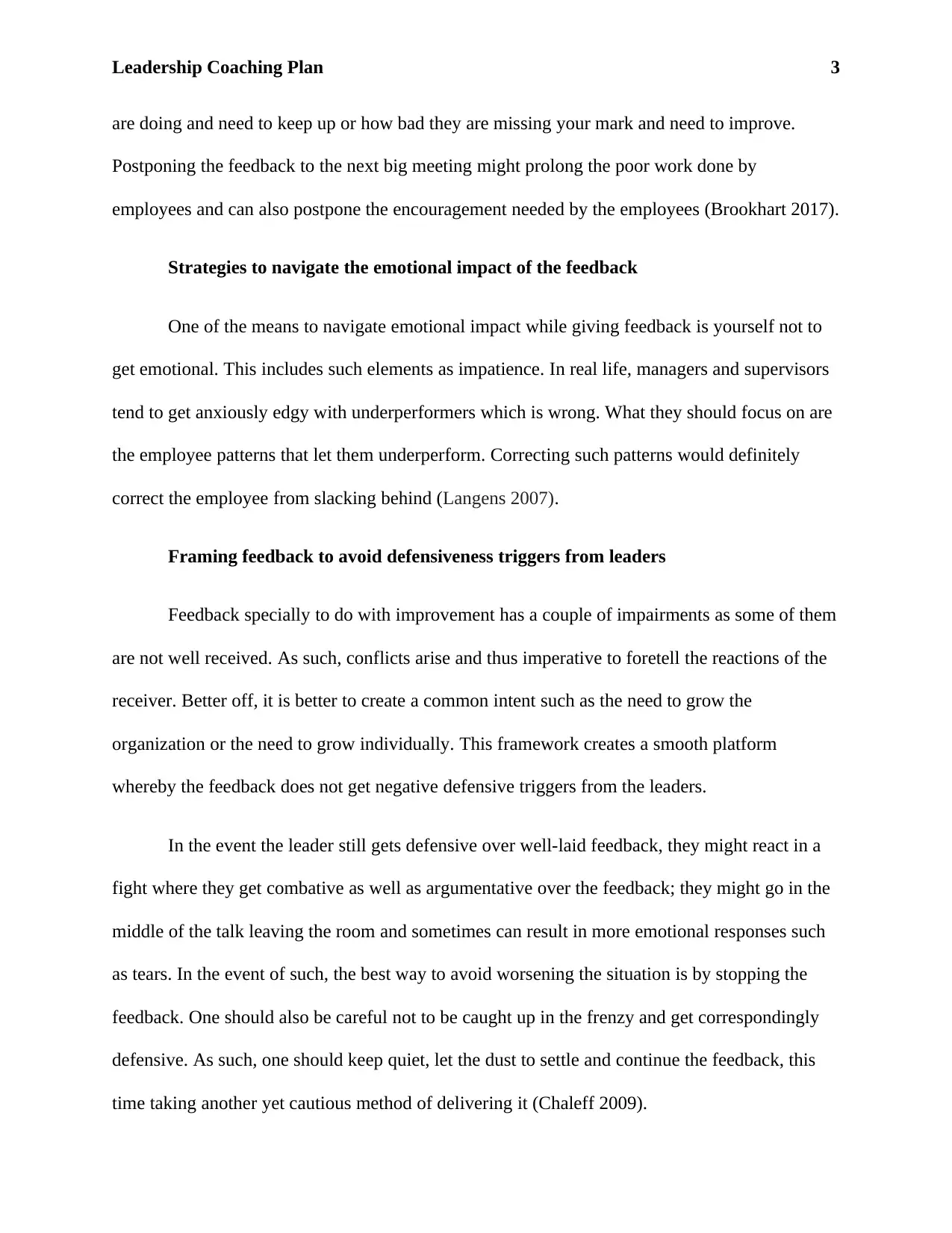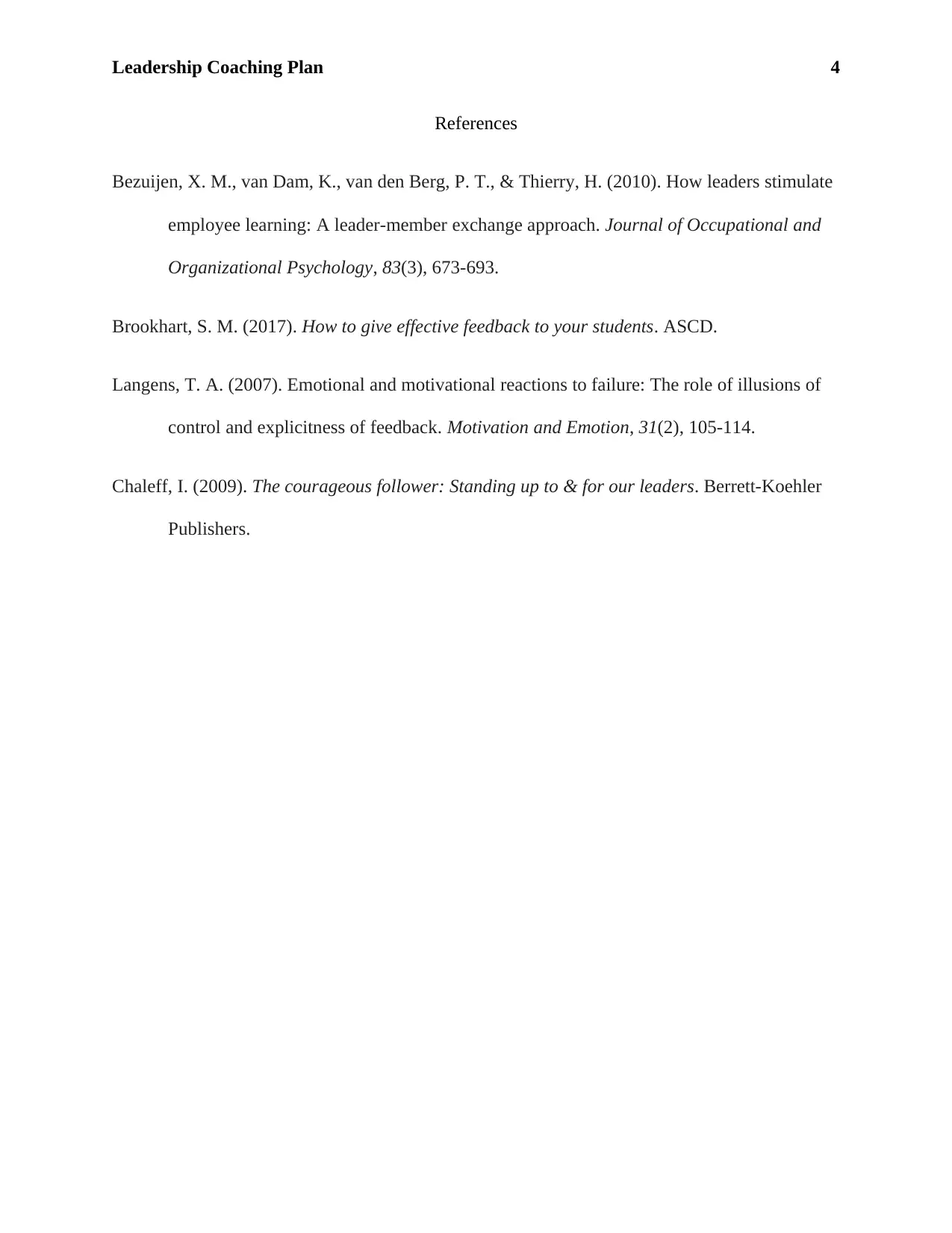Leadership Coaching Plan: Feedback Strategies for Leaders Report
VerifiedAdded on 2021/05/10
|4
|783
|36
Report
AI Summary
This report delves into the essential elements of a leadership coaching plan, emphasizing the strategies needed to provide constructive and balanced feedback to leaders within an organization. It explores the significance of timely feedback in enhancing organizational performance and employee decision-making. The report outlines effective methods for formulating helpful feedback, including the importance of immediate and specific communication. It also addresses strategies for navigating the emotional impact of feedback, such as maintaining composure and understanding employee patterns. Furthermore, the report examines how to frame feedback to avoid defensiveness, offering techniques for managing potentially negative reactions from leaders. It underscores the value of creating a shared intent and provides guidance on handling various emotional responses during feedback sessions. The report references key sources to support its analysis, providing a comprehensive guide to leadership coaching.
1 out of 4











![[object Object]](/_next/static/media/star-bottom.7253800d.svg)